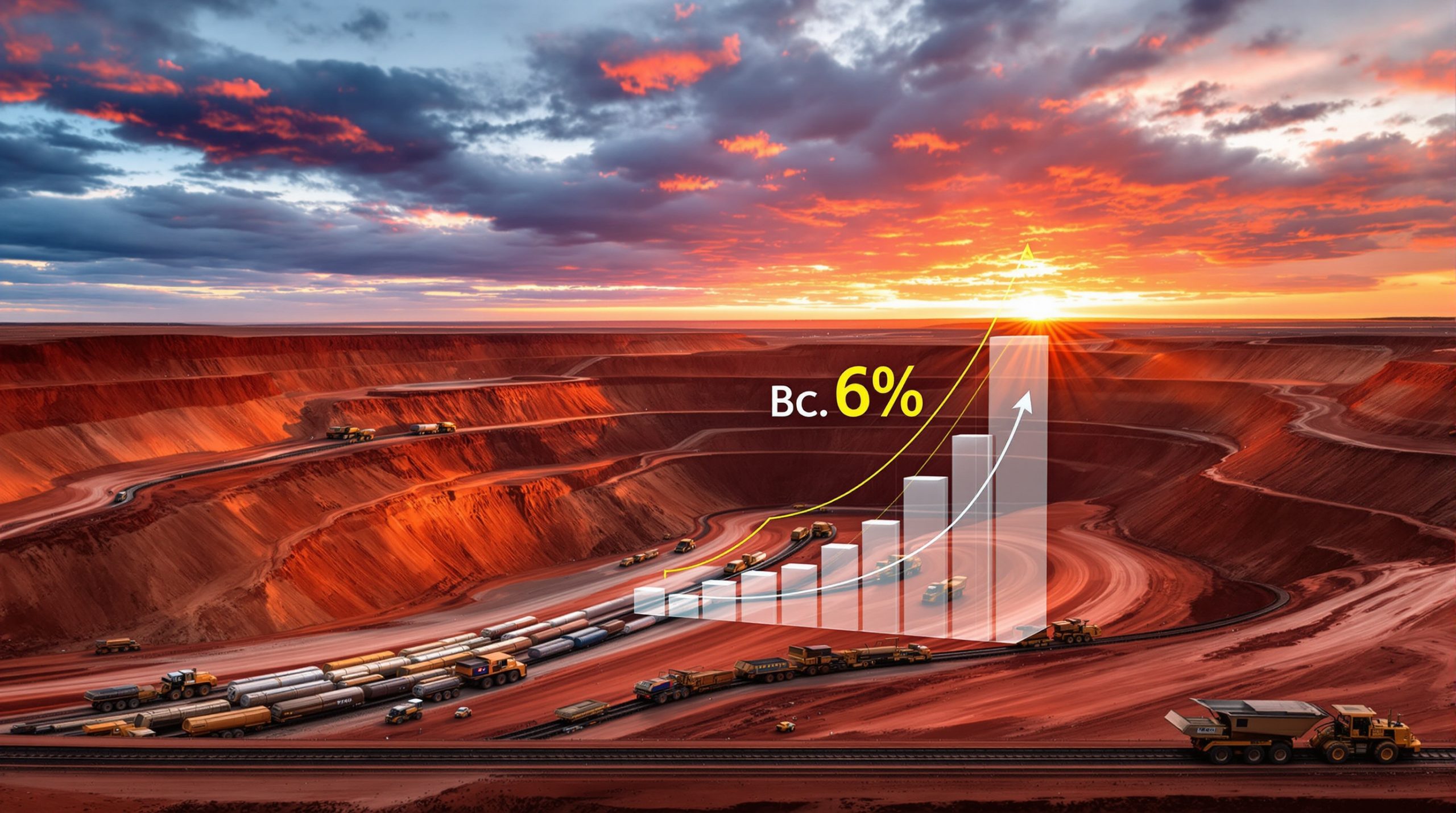Record Gold Prices in India: Why Investors Are Holding Rather Than Selling The Unprecedented Price Rally Gold prices in India have reached historic levels, touching ₹110,666 ($1,260.94) per 10 grams in September 2025. This represents a dramatic 42% increase year-to-date, following a 21% gain in 2024. The precious metal has been setting new record high analysis almost weekly, creating an extraordinary market environment for gold investors and consumers alike. According to Reuters, the gold price rally has been described by market participants as "unprecedented," with new record gold prices in India being established with remarkable frequency. Comparing Historical Price Points The current gold price trajectory shows a steep upward trend over recent years: September 2025: ₹110,666 per 10 grams (record high) Early 2025: Approximately ₹78,000 per 10 grams 2024: Average of ₹77,560 per 10 grams 2023: Average of ₹65,330 per 10 grams This historical comparison illustrates just how extraordinary the current rally is, with prices gaining nearly 70% in less than three years. Why Aren't Indians Selling Their Gold Despite Record Prices? The Psychology Behind Holding Despite skyrocketing prices that would typically trigger profit-taking, Indians are demonstrating remarkable restraint in selling their gold holdings. Market experts attribute this behavior to a widespread belief that prices will climb even higher. James Jose, Managing Director of CGR Metalloys, observed at the India Gold Conference in New Delhi that "Indians now believe gold prices will rise even higher, which is why they're choosing to hold their assets instead of selling them for a profit" (Reuters, September 17, 2025). This sentiment reflects a fundamental shift in how gold is viewed—not as a commodity that should be sold at peak prices, but as an inflation hedge benefits with continued upside potential. Price Expectations The optimism about future gold prices is quantifiable. Many gold holders are anticipating prices could reach as high as ₹125,000 per 10 grams, according to Harshad Ajmera of JJ Gold House in Kolkata (Reuters, September 17, 2025). This target represents an additional 13% increase from current record levels. This optimistic outlook is compelling investors to maintain their positions rather than liquidate at current levels, even though conventional investment wisdom might suggest taking profits after such a substantial rally. Contrast with Previous Price Surges This behavior marks a significant shift from March 2025, when gold first crossed the $3,000 per ounce threshold internationally. At that time, retail customers rushed to sell their holdings, triggering a substantial increase in scrap supply (Reuters, September 17, 2025). The current reluctance to sell reflects a fundamental change in market sentiment, with holders demonstrating unprecedented confidence in gold's continued upward trajectory. This psychological shift has profound implications for price dynamics, as limited selling pressure provides additional support for prices. How Is the Scrap Gold Supply Shortage Affecting the Market? Impact on Refiners and Jewelers The limited scrap gold supply is creating operational challenges for refiners who typically rely on recycled gold to supplement their production. With imports of dore (semi-pure gold alloy produced by miners) declining sharply, refiners are increasingly dependent on whatever scrap they can source from jewelers who accept old pieces in exchange for new ones. Harshad Ajmera of JJ Gold House noted that "Refiners are sourcing scrap from replaced jewellery to sustain operations, as imports of dore have declined sharply" (Reuters, September 17, 2025). This supply constraint represents a significant shift in the traditional gold supply chain in India. The Exchange Phenomenon While high prices have made new jewelry purchases prohibitively expensive for many consumers, jewelers report an increase in customers exchanging old pieces for new ones. Amit Modak, chief executive of PN Gadgil and Sons, observed this trend is helping maintain some level of retail activity despite the price constraints (Reuters, September 17, 2025). This exchange dynamic allows consumers to participate in the gold market without substantial additional investment, while also providing jewelers with a steady, albeit limited, supply of scrap gold for reprocessing. Banking Sector Benefits The scarcity of scrap gold ahead of India's festival season has created an unexpected advantage for banks. With limited recycled gold available, jewelers are increasingly turning to banks to meet demand through imported gold. According to a Mumbai-based jeweler working with a bullion importing bank, "The limited supply of scrap ahead of the festive season is a boon for banks, as jewellers increasingly turn to them to meet demand from imported gold" (Reuters, September 17, 2025). This shift has allowed banks to charge premiums even at record price levels, with reports indicating a $1 premium being applied. What's Driving Gold's Price Surge in India? Global Economic Factors The rally in gold prices is being fueled by several international factors: Expectations of U.S. Federal Reserve interest rate cuts Global economic uncertainties Geopolitical tensions Inflation concerns in major economies Deutsche Bank recently raised its gold price forecast to $4,000 per ounce, up from a previous expectation of $3,700/oz set in April (Reuters, September 17, 2025). This upward revision from a major financial institution further reinforces investor confidence in gold's potential. Domestic Currency Influences The performance of the Indian rupee against the U.S. dollar has amplified gold's rise in local terms. With the rupee trading at approximately 87.77 to the dollar (Reuters, September 17, 2025), imported gold becomes more expensive in local currency terms, further elevating domestic prices. This currency effect creates a compounding factor for Indian gold prices, where international price increases are magnified by any weakness in the domestic currency. Investment vs. Consumption Dynamics The high price environment has shifted gold's role in India from primarily a consumption good to more of an investment asset. This transformation is evident in how holders are treating their gold—as a store of value with appreciation potential rather than as jewelry to be worn or traded. This fundamental shift in perception has profound implications for the market performance amid surge, as it changes the price sensitivity of demand and potentially creates a more resilient price floor for gold in India. How Is Festival Season Demand Being Affected? Traditional Buying Patterns Indians traditionally increase gold purchases during the festival season, particularly around Dussehra and Diwali, which fall in October 2025. Buying gold during these festivals is considered auspicious and is deeply embedded in cultural practices (Reuters, September 17, 2025). This seasonal pattern typically creates predictable demand surges that jewelers and gold importers plan for throughout the year. Adapting to High Prices Despite record prices making new purchases challenging, the festival season is still expected to drive significant gold activity. However, the nature of transactions is evolving, with more emphasis on: Exchanging old jewelry for new designs Purchasing smaller, lighter pieces Focusing on gold's investment value rather than purely ornamental aspects These adaptations allow consumers to maintain cultural traditions while accommodating the financial realities of record gold prices in India. Import Trends Despite high prices, India's gold imports jumped 37% month-over-month in August 2025, reaching $5.4 billion according to trade ministry data (Reuters, September 17, 2025). This surge suggests that while individual consumers may be hesitant to buy at current prices, institutional and wholesale demand remains robust. The import increase ahead of the festival season indicates that suppliers are anticipating strong demand despite the price environment, possibly due to the exchange-based transaction model becoming more prevalent. What Are the Implications for India's Gold Market Going Forward? Price Sustainability Market analysts are divided on how long gold can maintain these record price levels. Some factors that will influence future price forecast insights include: The pace and extent of U.S. monetary policy easing Global inflation trends Performance of alternative investments Geopolitical developments The sustainability of current prices will largely depend on whether the psychological factors currently preventing profit-taking continue to dominate market behavior. Consumer Behavior Shifts The extended period of high prices is likely to permanently alter some aspects of India's gold consumption patterns: Greater emphasis on gold's investment attributes Increased interest in digital gold and gold ETFs More sophisticated recycling and exchange programs by jewelers Growing preference for lighter, more contemporary designs that use less gold These behavioral shifts may represent a permanent evolution in how Indians interact with gold, potentially changing market dynamics for years to come. Supply Chain Adaptations With scrap supplies remaining tight, India's gold supply chain is adapting through: Increased reliance on imports Development of more efficient recycling technologies Exploration of alternative sourcing arrangements Potential for increased domestic mining activity These adaptations will be crucial for meeting demand in a market where traditional scrap supply channels are no longer functioning as they once did. How Do Indian Gold Trends Compare Globally? International Price Movements While gold has reached record highs globally, India's price increases have been particularly pronounced due to currency effects and strong local demand dynamics. The international gold price has exceeded $3,700 per ounce, with Deutsche Bank projecting it could reach $4,000 by year-end (Reuters, September 17, 2025). The global nature of the rally suggests that international factors are primarily driving prices, but local conditions in India are amplifying these effects. Cultural Significance Differences India's relationship with gold differs significantly from Western markets: Gold in India has deeper cultural and religious significance Indian consumers often view gold as essential wealth rather than optional investment Family gold holdings are frequently passed down through generations Gold plays a crucial role in wedding ceremonies and family milestones These cultural factors create a unique demand profile that responds differently to price signals compared to purely investment-driven markets. Investment vs. Jewelry Demand In Western markets, investment demand typically drives gold price movements, while in India, jewelry and investment demand are more closely intertwined. This creates different market dynamics and price sensitivities. The blending of consumption and investment motives in India means that price elasticity of demand functions differently than in markets where gold is primarily an investment asset. FAQ: Understanding India's Gold Market Why is gold so important in Indian culture? Gold holds religious, cultural, and economic significance in India. It's considered auspicious, represents wealth and status, plays a central role in weddings and religious ceremonies, and serves as financial security, especially for women. The cultural importance of gold creates a base level of demand that persists regardless of price movements, though the form and quantity of purchases may adapt to economic realities. How do gold prices in India compare to international rates? Indian gold prices typically include a premium over international rates due to import duties, taxes (including GST), and local market dynamics. This premium can fluctuate based on demand-supply conditions and government policies. During periods of high demand and limited supply, as seen currently, these premiums can increase, further elevating local prices compared to international benchmarks. What factors might cause Indians to start selling their gold holdings? Several scenarios could trigger increased selling: Economic hardship requiring liquidation of assets A sharp reversal in gold prices creating fear of missing profit opportunities Alternative investment opportunities offering superior returns Government policies incentivizing gold monetization Any of these factors could potentially shift the current psychological dynamic from holding to selling. How do seasonal factors affect India's gold market? India's gold demand follows distinct seasonal patterns: Peak demand during wedding seasons (typically November-December and April-May) Strong buying during major festivals like Diwali and Akshaya Tritiya Relatively quieter periods during Shradh (inauspicious period) and monsoon months Year-end purchasing related to agricultural harvest income These seasonal patterns provide a rhythm to the market that helps participants plan inventory and pricing strategies throughout the year. What Makes This Gold Price Rally Different? Unprecedented Price Velocity The current rally stands out for its speed and magnitude. The 42% year-to-date increase represents one of the steepest climbs in recent decades, creating both opportunities and challenges for market participants. This velocity has contributed to the psychological expectation of continued increases, as many market participants extrapolate recent trends into future expectations. Changing Consumer Psychology Traditional wisdom suggested that at certain price thresholds, Indian consumers would sell gold for profit. The current market is challenging this assumption, with holders demonstrating remarkable price resilience and optimism about future appreciation. This psychological shift represents one of the most significant differences in the current rally compared to previous price surges. Global Context This rally is occurring against a backdrop of significant global economic uncertainty, including: Major central banks shifting monetary policy Ongoing geopolitical tensions Post-pandemic economic adjustments Concerns about inflation persistence These contextual factors provide fundamental support for gold prices that may not have been present in previous rallies. Technological Influences The gold market is also being shaped by technological changes: Greater access to price information through mobile apps Increased availability of digital gold investment options More sophisticated recycling and refining capabilities Better market transparency through technical market analysis These technological advances are changing how consumers interact with gold markets and may be contributing to the evolving behavioral patterns observed in the current rally. Disclaimer: This article contains market analysis and price projections based on current trends and expert opinions. Gold prices are subject to significant volatility and can be affected by numerous economic, geopolitical, and market factors. Readers should conduct their own research and consult with financial advisors before making investment decisions based on the information presented. Looking for an Edge in the Gold Investment Space? Discover potential opportunities beyond gold with Discovery Alert's proprietary Discovery IQ model, which instantly identifies significant ASX mineral discoveries and translates complex data into actionable insights. Visit the Discovery Alert discoveries page to understand how major mineral finds can lead to substantial returns and position yourself ahead of the market.

Canadian Oil Sands Consolidation Reshapes Industry Landscape
Discover how strategic mergers and acquisitions reshape Canadian oil sands



